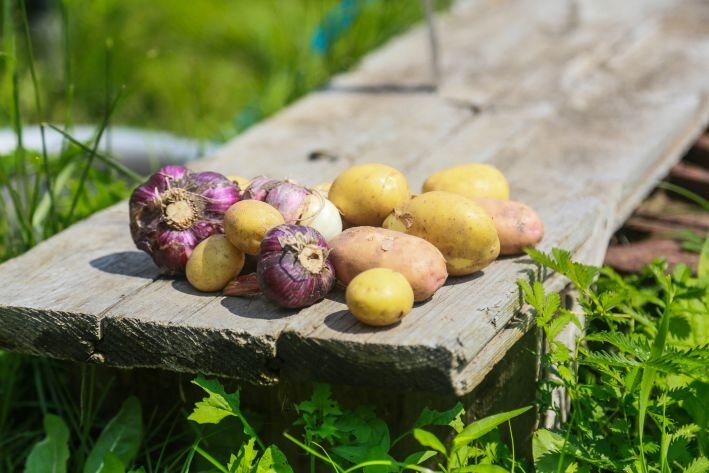Mistakes when planting potatoes: how not to be left without a harvest
Potatoes are an unpretentious crop, but when growing them, it is important to take into account certain nuances.
Inexperienced gardeners often make mistakes when planting potatoes, which can lead to a decrease in yield or even a complete loss of the crop.
Anastasia Kovrizhnykh , an expert of the online publication "BelNovosti", an agronomist and landscape designer, told how to act in such a situation.
Wrong choice of variety
Choosing the right potato variety is the key to success. When choosing, you should consider the climate conditions of the region, the type of soil, ripening time and resistance to diseases.
Planting varieties not suitable for a given region or soil type may result in unsatisfactory results.

Unprepared planting material
Using low-quality planting material is one of the common mistakes.
The tubers must be healthy, without signs of disease or damage, and have sufficient size and number of sprouts.
Before planting, it is recommended to treat the tubers with preparations against diseases and pests.
Violation of planting deadlines
The timing of planting potatoes depends on climatic conditions and variety. The optimum soil temperature for planting is +8-10 °C.
Early planting in cold soil can lead to rotting of tubers, and late planting can lead to a shortened growing season and reduced yield.
Incorrect planting depth
The depth of planting potatoes depends on the type of soil and the size of the tubers. On light sandy soils, tubers are planted deeper than on heavy clay soils. The optimal planting depth is 8-10 cm.
Planting too shallowly leads to drying out of tubers and the formation of green tubers, while planting too deep leads to delayed germination and reduced yield.
Inappropriate distance between rows and tubers
The distance between rows and tubers should be sufficient for normal plant development and access to light and air. The required distance between rows is 60-70 cm, and between tubers in a row - 30-40 cm.
Neglect of pre-planting soil cultivation
Preparing the soil before planting potatoes is important. The soil should be loose, fertile and well-drained.
The application of organic and mineral fertilizers, as well as liming of acidic soils, helps improve the structure of the soil and increase its fertility.
Insufficient care of plantings
Caring for potato plantings includes regular watering, loosening the soil, hilling and controlling weeds, diseases and pests. Lack of moisture, thickening of plantings and the presence of weeds negatively affect the development of plants and yield.
Incorrect harvesting and storage of crops
Potato harvesting is carried out in dry weather after the tubers have fully ripened.
The dug up tubers must be dried and sorted, removing damaged and diseased specimens. Potatoes should be stored in a cool, dark and well-ventilated room.
Earlier we told you how to feed flowering honeysuckle .
